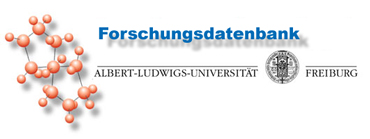| [Zurück zum Forschungsbericht] |
 |

Röntgenstrukturanalyse von Proteinen
Projektbeschreibung:X-ray crystallography is still the most important method for the determination of 3-dimensional biomacromolecule structures. With the information received from crystal structures it is possible to understand the exact catalytical mechanism of enzymes and to predict possible inhibitors. Such inhibitors of medicinally relevant enzymes can be developed further and then tested as potential drugs ("rational drug design"). If the function of natural enzymes is understood at a molecular level, it is possible to change specific biochemical properties such as the substrate specifity ("Protein Engineering"). This is achieved by site-directed mutagenesis of the correspondent gene. After expression and purification, the proteins are functionally and structurally characterized. We are particularly interested in the modifications of enzyme catalysis (for example in changing the product spectrum in a cyclodextrin generating enzyme), in the characteristics of the membrane-channel of porines and in changing the manner in which proteins associate (in order to build up protein networks) (SFB 428). Our special interest is in the field of membrane proteins. Because of their large hydrophobic surfaces specific difficulties arise with purification and crystallization. In order to prevent aggregation of the protein, carefully selected detergents have to be added. The second atomic structure of a membrane protein was solved in our group in 1989 (Porin from R. capsulatus). Furthermore we have solved the structures of two other bacterial porins as well as the structures of squalen-hopene-cyclase, OmpA and OmpX.Projektlaufzeit:
Weitere Informationen: http://www.structbio.uni-freiburg.de/
Ansprechpartner: Prof. Dr. Georg E. Schulz
Tel: +49 761 203-6058
Email: georg.schulz@ocbc.uni-freiburg.de
Projektbeginn: 01.10.1983Projektleitung:
Projektende: (unbegrenzt)
Prof. Dr. Georg E. SchulzAktueller Forschungsbericht
Albert-Ludwigs-Universität Freiburg
Institut für Biochemie
Arbeitskreis Prof. Dr. Georg E. Schulz (pensioniert)
Albertstr. 21
79104 Freiburg